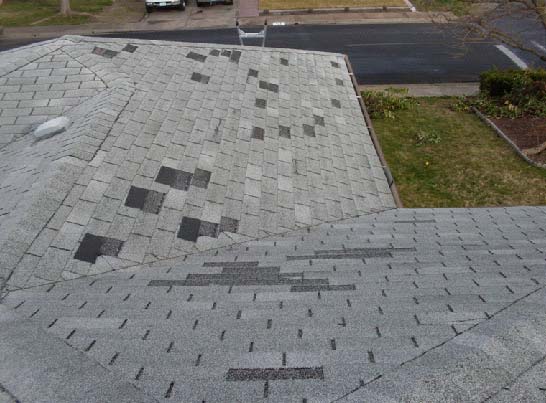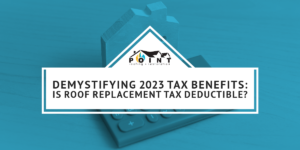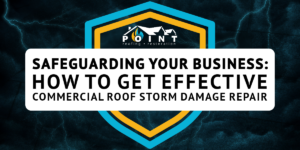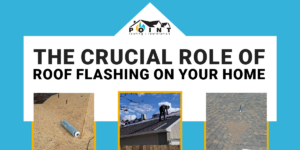The average cost to replace an asphalt shingle roof in the U.S. is around $8,500.
This is the most common and popular roofing type in the country. The price skyrockets when you consider specialty roofing materials such as cement roof tiles.
That said, it’s smart to be proactive about roof repair. A damaged roof might only have a few shingles missing, or it could be in major need of an overhaul.
Regardless, acting quickly is the best step to take. Today, we’re discussing some of the most common culprits that could leave your roof needing a makeover. Learn how to identify these scenarios to protect your investment today and into the future.
Ready to learn more? Let’s get into it!
1. Improper Maintenance
Far and away, one of the most common causes of roof damage is failing to keep up with required maintenance checks.
If you have an asphalt or composite shingle roof, aim to have yours inspected about once every three years. If your shingles are tile, you can expand that timeframe to five years.
During this time, a roofing contractor can inspect your roof for both obvious and inconspicuous signs of disrepair. This step is vital to catching leaks early, correcting wayward shingles and otherwise safeguarding your structure against future damage.
When caught early, most issues can be remediated at little cost to the homeowner. When left to exacerbate, however, they can quickly snowball into enormous expenses.
2. Wind Damage
Wind is one of the most powerful assailants against an otherwise sturdy roof. A period of strong gusts can rip away shingles, exposing nails and other materials.
When this happens, the interior of your home could be left vulnerable to leaks. Moreover, debris carried by the wind can also impact your roof. Keep in mind that most roofs are designed to hold up against a normal wind gust, but when the forces are strong enough, major damage can occur.
Even if you don’t see any physical issues after a wind storm, it could have still wreaked invisible havoc. How? Wind can create stress points along a roof. As time goes on, these points become compromised and eventually give way.
Pay close attention to the corners and perimeter of your roof, as these areas include shingles that are already looser than in other places. As such, they can be especially susceptible to wind damage, catalyzing a domino effect of peeling that continues all across the roof’s surface.
3. Hail Damage
Akin to wind damage, the force of a shingle struck by hail is enough to loosen it and erode its granules. These are the rough and bumpy outer layers of the shingles that help protect the layer of asphalt underneath.
When these are eroded away, the asphalt is left exposed and vulnerable to the sun’s ultraviolet rays. These can quickly erode what’s left of the shingle, requiring extensive replacement.
The size and density of the hailstones will determine the extent of their damage. You might notice a black spot at the point of impact, and this spot might also feel soft, like a bruised fruit.
The inconsistency in the shape and format of a hailstone means that the damage they cause is likewise irregular. You may see entire patches that need repair while others appear untouched.
4. Fallen Branches
Do you have any tree limbs dangling dangerously close to your roofline? If so, it’s time to trim those back, ASAP. One of the most preventable types of roof damage is caused by fallen branches.
Even before they fall, those limbs could be working against your roof. As the wind sways them, they can scratch and erode your shingles, stripping asphalt off by the layer.
Then, when autumn hits, their leaves can fall directly onto your roof and into your gutters. Left unattended, this debris can rot and lead to unsightly and dangerous mold or moss, which can penetrate further and cause leaks.
Before any branches fall directly onto your roof and cause a major safety concern, go ahead and hire a professional to shore them up or remove them completely if required.
5. Heavy Storms
You may also experience a broken roof from a heavy downpour. Of course, a well-maintained roof that’s within its lifespan shouldn’t become ruined after a single soak.
Yet, if yours is compromised or weakened in any way, drenching it could be the final linchpin. If you’re working on your roof, be sure to use a tarp to cover any exposed areas and keep them protected during a weather event.
Once the rain is over, the threat of damage still exists. If the underlayment of your roof becomes excessively dampened, it could penetrate into your roof deck. From there, it can compromise your home’s structural integrity and introduce mold into the interior.
If your roof slopes, be sure that your contractor installs weatherproofing where its parts connect, as these areas are known to hold water.
We’ll Fix Your Damaged Roof Today
You know what they say about an ounce of prevention. Taking steps today to protect your roof from damage is the best way to help safeguard it down the road.
Sometimes, though, events and circumstances happen that are beyond our control. This is especially the case with unforeseen weather events.
If you’re already dealing with a damaged roof, let us help.
Our team of experts is well-versed commercial and residential roofing and restoration. We’ll work with you to get yours back to top shape in no time. Contact us today for a free inspection and let us take care of the rest.






